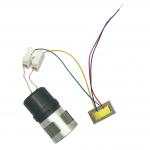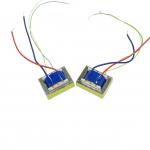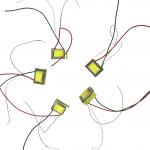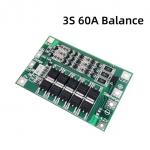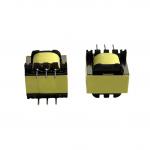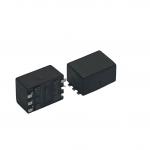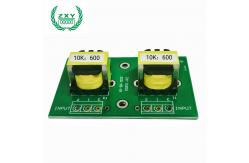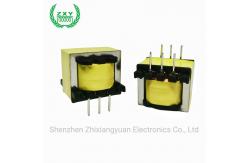PCB Mount 2207 Permalloy Audio Transformer 600:600 10K:10K 10K:6001.Product Description The PCB Mount 2207 Permalloy Audio Transformer is a specialized
component designed for audio applications. With a permalloy core, it offers excellent magnetic properties,
such as high magnetic permeability and low magnetic hysteresis. This enables it to efficiently transfer audio signals with minimal
distortion, ensuring high - quality sound reproduction. The PCB - mount design allows for easy integration onto printed
circuit boards, making it convenient for use in various audio -
related electronic devices, like amplifiers, mixers, and audio
processing units. It can effectively isolate circuits, match impedances, and balance
or unbalance audio signals, playing a crucial role in optimizing
audio performance and enhancing the overall audio experience. NO | TEST ITEM | TEST TERMINAL | LIMIT | TEST CONDITION | TEST INSTRUMENT | 1 | INDUCTANCE | 1-3 | 100 H MIN | 100HZ 03V PARALLEL | CD1063 | 4-6 | 6.0H MIN | 100HZ 0.3V PARALLEL | CD1063 | 2 | DCR | 4-6 | 558 OHM+15% | 25C | CD1063 | 3 | IMPEDANCE | 1-3 | 40 OHM土15% | 25C | CD1063 | 4 | TURN RATION | 1-3,4-6 | 600 OHM | 1-2,1KHZ,10K,OHM LOAD | CH3250 | 5 | PRI-SEC | 1-3,4-6 | 4:1+ 2% | 10KHZ 1V | CH3250 |
2.Features| Aspect | Characteristics of PCB Mount 2207 Permalloy Audio Transformer | | Structure | - PCB - Mount Design: Specifically designed for printed - circuit - board mounting. Its
compact size and precisely - configured pin layout enable easy
integration onto PCBs, saving significant board space. This design
is highly suitable for modern, miniaturized audio devices,
facilitating a more streamlined and space - efficient circuit
design. | | - Permalloy Core: Utilizes a permalloy core, which has a unique physical structure
optimized for efficient magnetic flux transfer. The permalloy's
fine - grained magnetic structure contributes to its excellent
magnetic properties in audio - frequency applications. | | Electrical Performance | - High Magnetic Permeability: Permalloy offers an extremely high magnetic permeability. In the
audio frequency range (20Hz - 20kHz), this allows for efficient
magnetic coupling, minimizing energy losses during signal transfer.
As a result, it can accurately transmit both low - frequency bass
and high - frequency treble signals with minimal attenuation,
ensuring a flat frequency response across the entire audio
spectrum. | | - Low Hysteresis Loss: Exhibits low magnetic hysteresis loss. This means that when the
magnetic field in the core alternates with the audio signal, less
energy is wasted in reversing the magnetization of the core.
Consequently, the audio signal experiences less distortion, leading
to high - fidelity sound reproduction. | | - Low Eddy - Current Loss: The permalloy core, along with proper winding techniques, helps
to reduce eddy - current losses. Eddy currents can cause heating
and power dissipation in the core. By minimizing these losses, the
transformer can operate more efficiently, especially during long -
term use in audio equipment. | | Function | - Audio Signal Isolation: Effectively isolates different parts of the audio circuit. This
isolation prevents electrical interference from one section of the
circuit from affecting others, ensuring a clean and pure audio
signal. For example, it can separate the input and output stages of
an audio amplifier, protecting the sensitive input from potential
noise or interference from the high - power output stage. | | - Impedance Matching: Can match the impedance between different audio components.
Proper impedance matching is crucial for maximizing the power
transfer between devices, such as between a microphone and a pre -
amplifier or between an amplifier and a speaker. By adjusting the
turns ratio of the transformer windings, it can transform the
impedance to an optimal value for efficient signal transfer. | | - Balanced/Unbalanced Conversion: Capable of converting between balanced and unbalanced audio
signals. This is important as many audio devices use either
balanced or unbalanced connections. The transformer allows for
seamless integration of different types of equipment, enhancing the
flexibility and compatibility of audio systems. |
|
